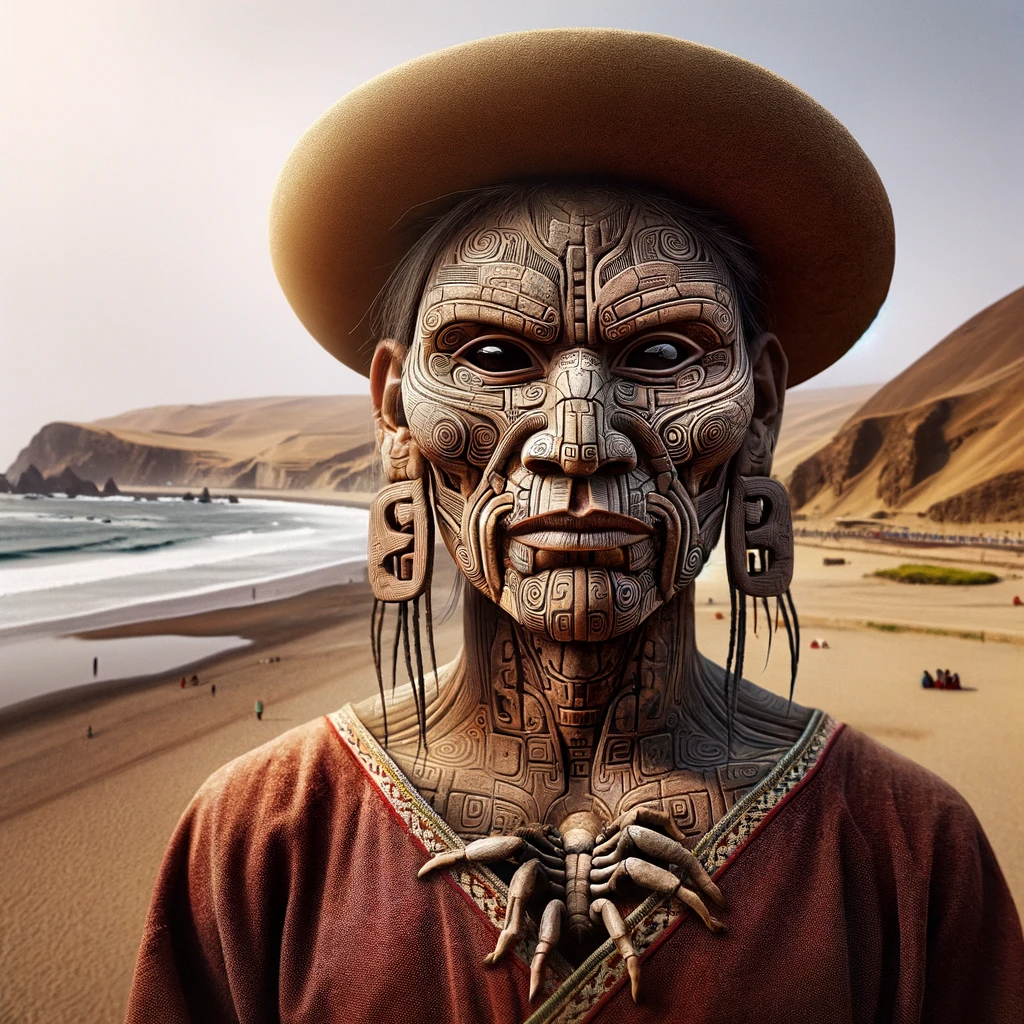
Ai-Apaec, often revered as the chief deity in Moche mythology, represents a fascinating and complex figure in ancient Peruvian religious beliefs. The Moche civilization, flourishing along the northern coast of modern-day Peru from approximately 100 to 700 AD, developed a rich and varied mythology, with Ai-Apaec at its apex.
Origin and Depictions
Ai-Apaec, also known as the “Decapitator,” was primarily worshipped by the Moche people. He is often depicted in Moche iconography as having the facial characteristics of a spider, sometimes with feline fangs and human attributes. This portrayal is believed to symbolize power, fertility, and the duality of life and death.
Role in Moche Society
Ai-Apaec was considered the creator god, associated with agriculture, water, and warfare. He was believed to ensure the fertility of crops, the availability of water, and success in conflicts. Sacrifices, often in the form of animals or human captives, were made to appease him, particularly during periods of environmental stress or before battles.
Ceremonial Importance
The Moche people conducted elaborate ceremonies to honor Ai-Apaec. These rituals, depicted on Moche pottery and murals, often involved human sacrifice. Scholars suggest these sacrifices were meant to nourish Ai-Apaec, who, in return, would guarantee prosperity and protection to the Moche people.
Architectural Influence
Temples and ceremonial platforms, such as the Huaca del Sol and Huaca de la Luna, were built to honor Ai-Apaec. These structures, massive and richly decorated, reflect the deity’s importance in Moche society. Archaeological findings, including murals and pottery, provide insights into the rituals and offerings made to Ai-Apaec.
Legacy and Interpretation
The Moche civilization, without a written language, left behind a wealth of iconography that offers a window into their religious practices and beliefs. The figure of Ai-Apaec, central in this iconography, continues to be a subject of study and fascination among historians and archaeologists. His depiction as a spider deity highlights the Moche’s complex cosmology and the intertwining of natural and supernatural realms.
Conclusion
Ai-Apaec’s prominence in Moche mythology underscores the civilization’s deep connection with their environment and the spiritual world. As a deity embodying creation and destruction, Ai-Apaec reflects the Moche’s understanding of the cyclical nature of life and their reliance on the divine for survival and success. The legacy of Ai-Apaec offers invaluable insights into the religious life and worldview of one of ancient Peru’s most intriguing cultures.
